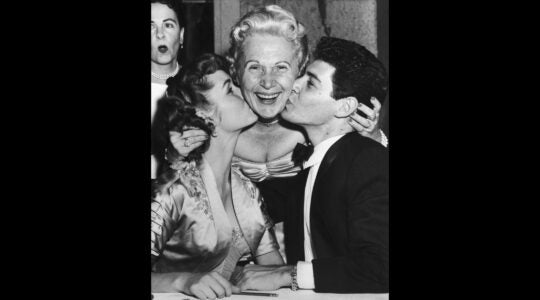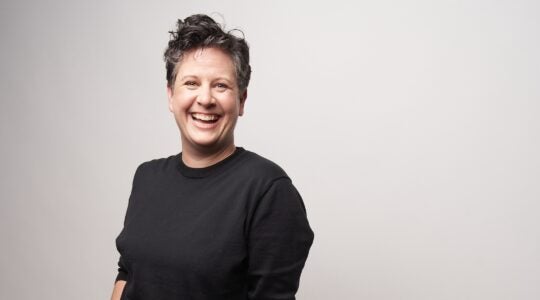At 19, Rabbi Ephraim Oshry wrote a book on Talmud. He was recognized as a posek, an expert on Jewish law, in Kovno, the second-largest city in Lithuania.
Within a decade, his knowledge would be tested in a way he never foresaw. During the three years of German occupation, as one of the few remaining rabbis in the Kovno ghetto, he would answer questions that had life-and-death implications: Was suicide permissible? Could a woman who had become pregnant in the ghetto undergo an abortion? Could a Caesarean section be performed on a dead woman?
Rabbi Oshry answered the questions, using as resources the Jewish texts in the warehouse where the Nazis had appointed him custodian.
He quickly recorded the questions and his answers (sheilot and t’shuvot) in Hebrew on scraps of papers torn from cement sacks, and hid them in tin cans he buried in the ground. The rabbi planned to recover his halachic opinions and write them in an expanded fashion, if he survived the war; they might be discovered and serve as a testimony to the Jews’ life and death in the ghetto, if he didn’t.
Rabbi Oshry survived the Holocaust and moved to New York City in 1952. He died Sept. 28 at Mount Sinai Medical Center. He was 89.
The rabbi eventually found the scraps bearing 112 of the questions and answers. He published them in five volumes, winning two National Jewish Book Awards, and excerpts appeared in English as "Responsa from the Holocaust" (Judaica Press, 1983.)
"This book exists partly because I … wanted to save something" from the world the Final Solution nearly destroyed, he wrote in the book’s introduction. "People, the plain people, approached me with their questions … simple Jews whose faith in the Almighty was the core of their being."
"Thousands of people were dependent on these rabbis" who answered crucial halachic questions, said Joseph Friedenson, a Warsaw Ghetto survivor who edits the monthly Yiddish magazine of Agudath Israel. "It was very important to keep up the spirit."
Born in Kupishok, in north central Lithuania, Rabbi Oshry studied at the Slobodka yeshiva, one of the most prominent institutions of advanced Talmudic learning in prewar Europe. As a young rabbi in Kovno, he held secret nightly worship service and helped preserve other forms of religious observance, including the baking of matzah, after the ghetto was established.
After the ghetto’s liberation by Soviet troops, he buried Kovno’s dead and tracked down scores of Jewish youths who had been in hiding. Rabbi Oshry then traveled to Bialystok, Warsaw, Krakow, Czechoslovakia, Hungary, Austria, Rome, Montreal and finally New York. His mother and two sisters died in the Holocaust.
He served for 51 years as spiritual leader of Beth Hamedrash Hagadol on the Lower East Side. Rabbi Oshry is survived by his wife, Fraida; three daughters, Chana Weinstock and Leah Greenbaum, both of Brooklyn, and Chaya Greenberg of Monsey; six sons, Dov, Zelig and Yisroel of Brooklyn, Yehuda and Jacob, both of Monsey, and Moshe of Israel; 40 grandchildren and eight great-grandchildren.
The New York Jewish Week brings you the stories behind the headlines, keeping you connected to Jewish life in New York. Help sustain the reporting you trust by donating today.




